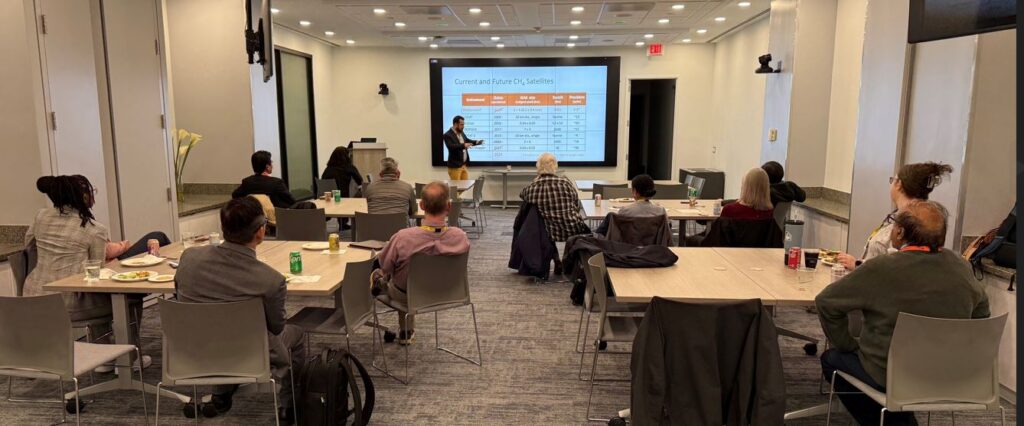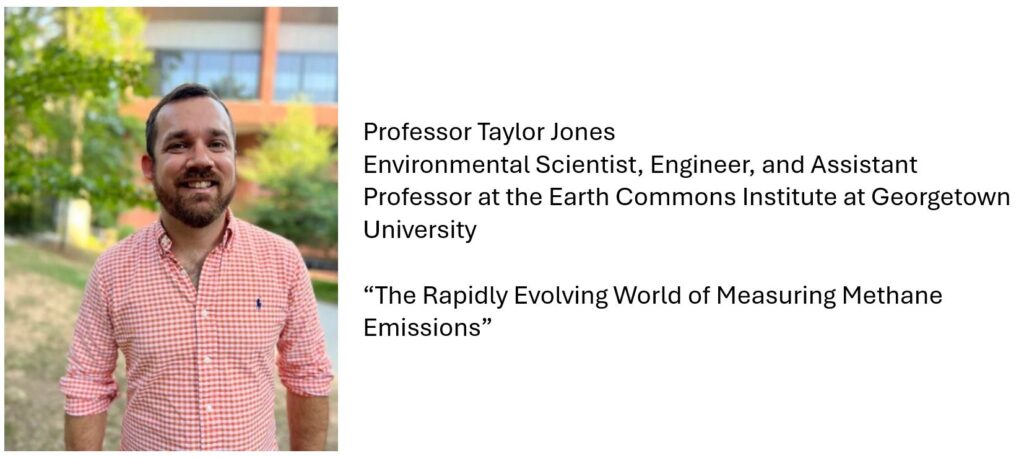Thank you to everyone who turned out for this very exciting and engaging talk.
View the recording


| DATE / TIME: | March 27, 2025 |
| 6:00 p.m. | Check-in / Networking |
| 6:30 p.m. | Dinner |
| 7:00 p.m. | Presentation: “The Rapidly Evolving World of Measuring Methane Emissions” |
| IN PERSON: | ACS Headquarters – Marvel Hall 1155 16th Street, N.W. – Washington, DC 20036 |
| VIA ZOOM: | https://american-chemical-society.zoom.com/meeting/register/sGV739PtS_ugd-qtAyY8ow?optimizely_user_id=505339e8402c48fd99af75ef45e27cd2 |
| MENU: | Meal will be catered by W. Millar & Co. and will feature filet mignon and crabcakes, Caesar salad, char grilled vegetables, bread, and assorted cookies. Beverages will be provided. Vegetarian Option will be offered only if requested. |
| COST: | $30.00 per person (half price for students) |
Bio
Taylor Jones is an environmental scientist, engineer, and assistant professor at the Earth Commons Institute at Georgetown University. His research focuses on innovative ways to measure and model concentrations of greenhouse gases in our atmosphere, particularly in cities, and methods for using this data to help policymakers and other stakeholders better understand carbon emissions.
After receiving his bachelor’s degree in electrical engineering from the University of Maryland, he designed, built, and deployed LIDAR sensors for the study of atmospheric aerosols and clouds—collaborating with NASA and researchers around the world. He holds master’s and doctorate degrees in Environmental Science and Engineering from Harvard University, where his research topics included inverse modeling techniques for the quantification of greenhouse gas emissions from cities.
As a research professor in Boston University’s Terrestrial Carbon Lab, Dr. Jones developed new instrumentation for the remote sensing of photosynthetic activity in plants via solar-induced fluorescence (SIF). He is a member of the science team for NASA’s OCO-2 and OCO-3 satellite missions, which measure CO2 concentrations and SIF around the world. Dr. Jones has collaborated with many other organizations, including the Environmental Defense Fund, the Department of Energy, and the National Institute of Standards and Technology (NIST) in Gaithersburg, Maryland, where he helps run an experimental forest.
Abstract
Methane emissions from agriculture, natural gas, and waste management are contributing to the warming of our planet. In recent years there has been a push to better understand and regulate these emissions. Scientists, regulators, and industry groups have been working together to devise strategies for the detection and mitigation of these emissions, particularly from the natural gas sector. The landscape of methane measurement and regulation is changing rapidly. In the past year, new rules have been released, and two new satellites have been launched. I will discuss how methane emissions are measured, including methods using remote sensing data from satellites.


